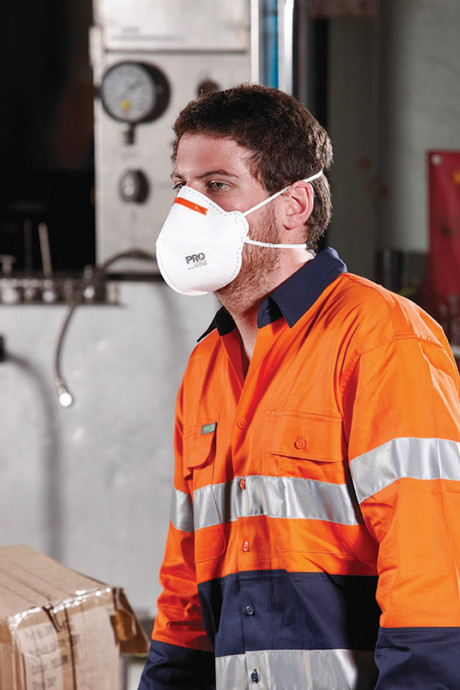How to safely don and doff PPE

It is important to follow correct procedures when donning and doffing personal protective equipment (PPE) in order to ensure the health and safety of workers.
Incorrect procedures for the application and removal of PPE can potentially expose the wearer to hazardous materials or the contamination of critical areas.
The key concern is ensuring that there is a barrier between the wearer’s skin and any contaminants in their surroundings.
“A PCBU has a requirement to ensure staff are trained in the effective and safe selection, use, maintenance and disposal of PPE,” said Brad Rodgers, product development manager of ProChoice Safety Gear.
Generally, the removal of safety gear should begin with gloves and coveralls (being careful not to touch affected areas), goggles/safety glasses, and then respiratory protective equipment. Immediately after donning or removing PPE, the hands should be washed using an alcohol-based hand sanitiser.
If the PPE is single use, then the wearer should dispose of it. If it has been used to handle chemicals, the PPE should be disposed of in accordance with the chemical manufacturer’s recommendations.
“If it is re-usable PPE, it should be cleaned and disinfected and then stored in a cool, dry place where it can be accessed and reused again,” Rodgers said.
Incorrect doffing procedures can lead to hazardous materials exposure (touching the outside of the glove) and also contamination of critical areas (doffing the glove whilst still in contact or near clean areas).
The process for donning PPE is also important, though not as critical as the process for doffing, according to Rodgers. He said gloves should be put on last, after donning coveralls, respiratory protective equipment, goggles and other PPE.
Donning PPE should also generally occur in a separate room or facility before a worker is exposed to the task environment.
Sequence for donning (putting on) PPE
Coveralls/gown
- Fully cover the torso from neck to knees, and from arms to the ends of wrists, and wrap around the back.
- Fasten at the back of the neck and waist.
Mask/respirator
- Secure ties or elastic bands at middle of the head and neck.
- Fit flexible band to nose bridge.
- Fit snug to face and below chin. (Please note: skin should be clean-shaven.)
- Fit-check respirator.
- Goggles/specs/face shield.
- Place over face and eyes and adjust to fit.
Gloves
- Extend to cover wrist of isolation gown.
- Always use safe work practices:
- Keep hands away from face.
- Limit surfaces touched.
- Change gloves when torn or heavily contaminated.
- Perform hand hygiene.
Process for doffing (removing) PPE
Perform hand hygiene between steps if hands become contaminated and immediately after removing all PPE.
Gloves and gown
- Your gown front, sleeves and the outside of gloves will be contaminated.
- If your hands get contaminated during gown or glove removal, immediately wash your hands or use an alcohol-based hand sanitiser.
- Grasp the gown in the front and pull away from your body so that the ties break, touching the outside of the gown only with gloved hands.
- While removing the gown, fold or roll the gown inside out into a bundle.
- As you are removing the gown, peel off your gloves at the same time, only touching the inside of the gloves and gown with your bare hands. Place the gown and gloves into a waste container.
Goggles/face shield
- The outside of goggles or face shields will be contaminated.
- If your hands get contaminated during goggle or face shield removal, immediately wash your hands or use an alcohol-based hand sanitiser.
- Remove goggles or face shield from the back by lifting the head band, without touching the front of the goggles or face shield.
- If the item is re-usable, place in designated receptacle for reprocessing. Otherwise, discard in a waste container.
Mask/respirator
- The front of the mask/respirator will be contaminated — do not touch.
- If your hands get contaminated during mask/respirator removal, immediately wash your hands or use an alcohol-based hand sanitiser.
- Grasp bottom ties or elastics of the mask/respirator, then the ones at the top, and remove without touching the front.
- Discard in a waste container.
Smoke complexity, skin absorption and protective equipment in firefighter safety
To address health and safety questions raised by Australian firefighters, researchers have...
Will silicosis compensation costs rise despite Victoria's engineered stone ban?
Monash University researchers have explored whether silicosis compensation costs are set to...
Army aims to combat heat risk with wearable monitor prototype
A wearable heat risk monitor prototype for the Australian Defence Force is being trialled by Army...








